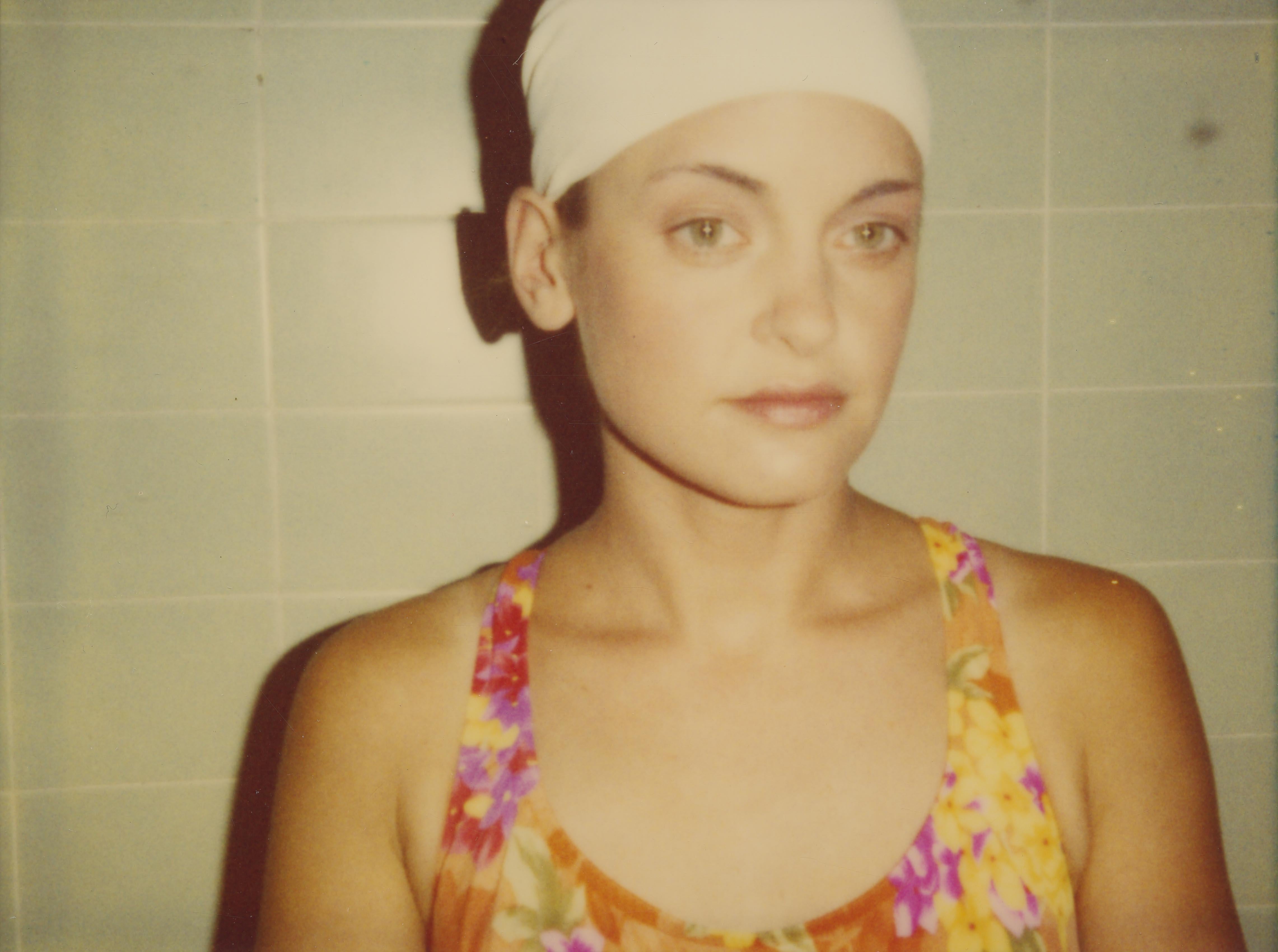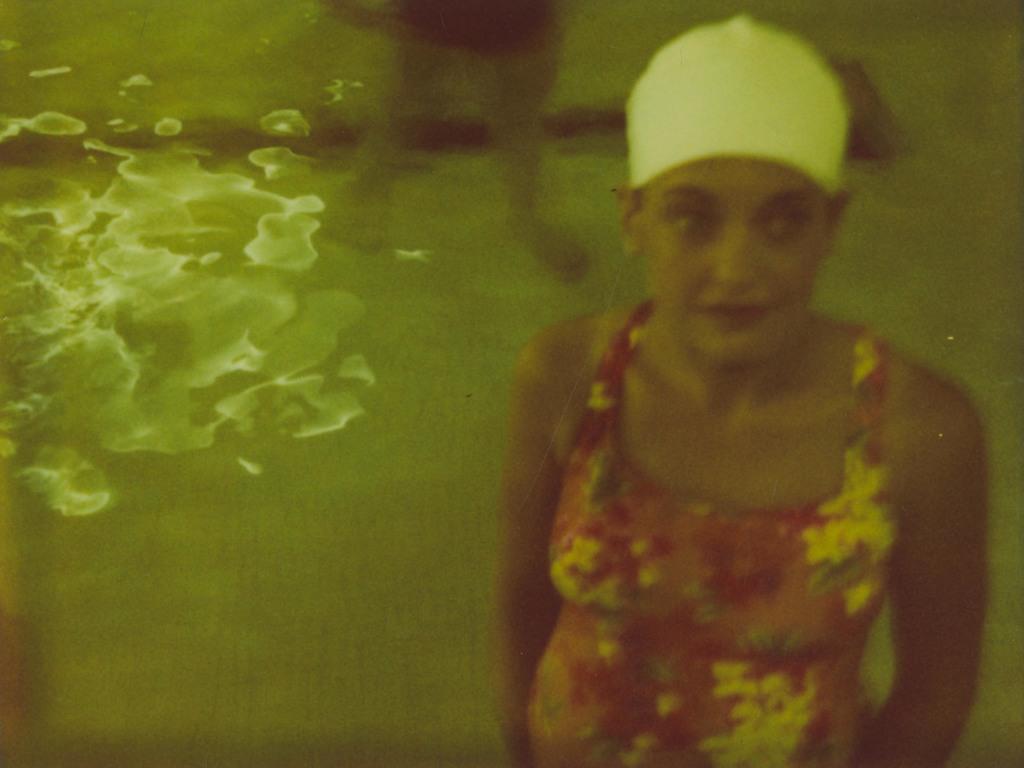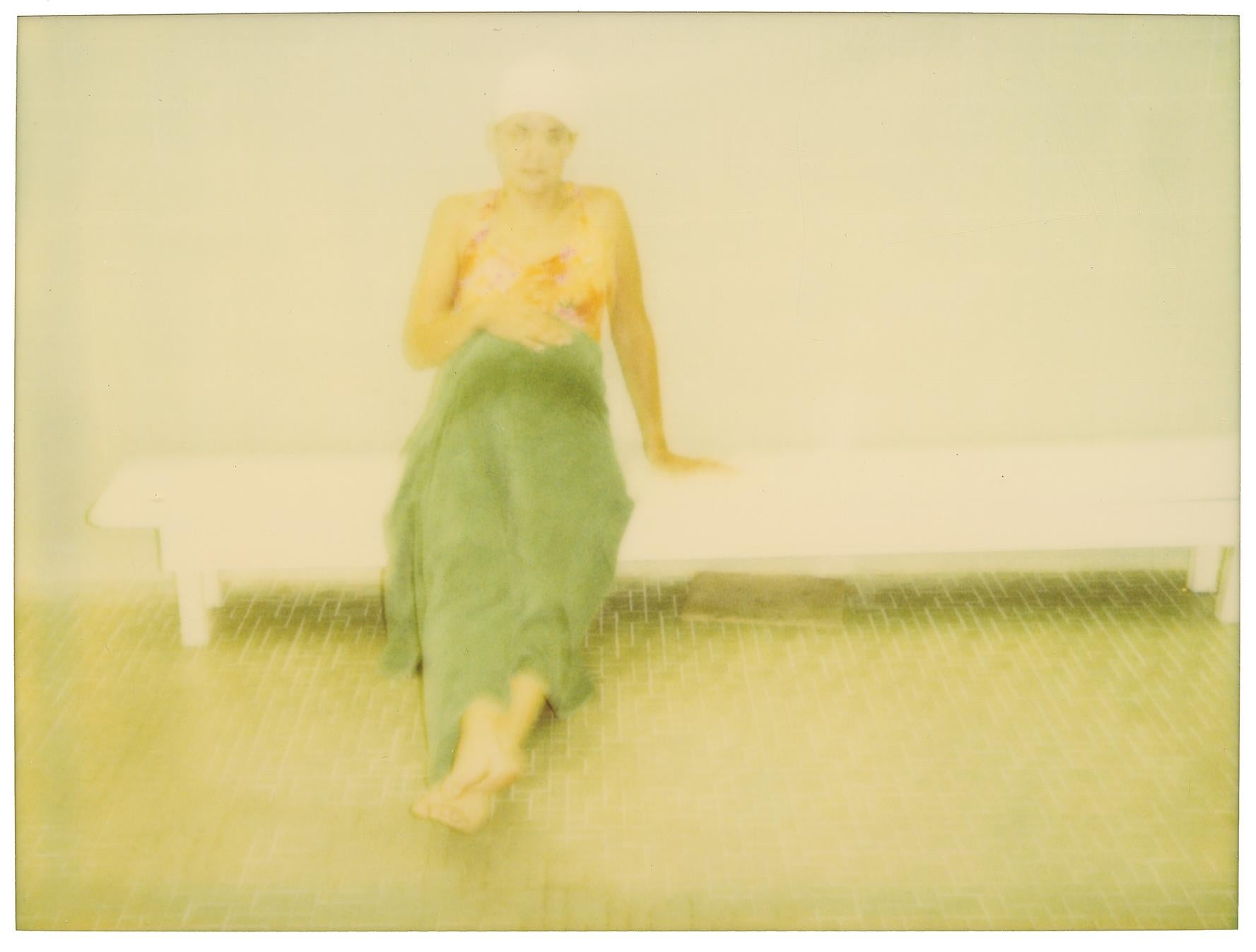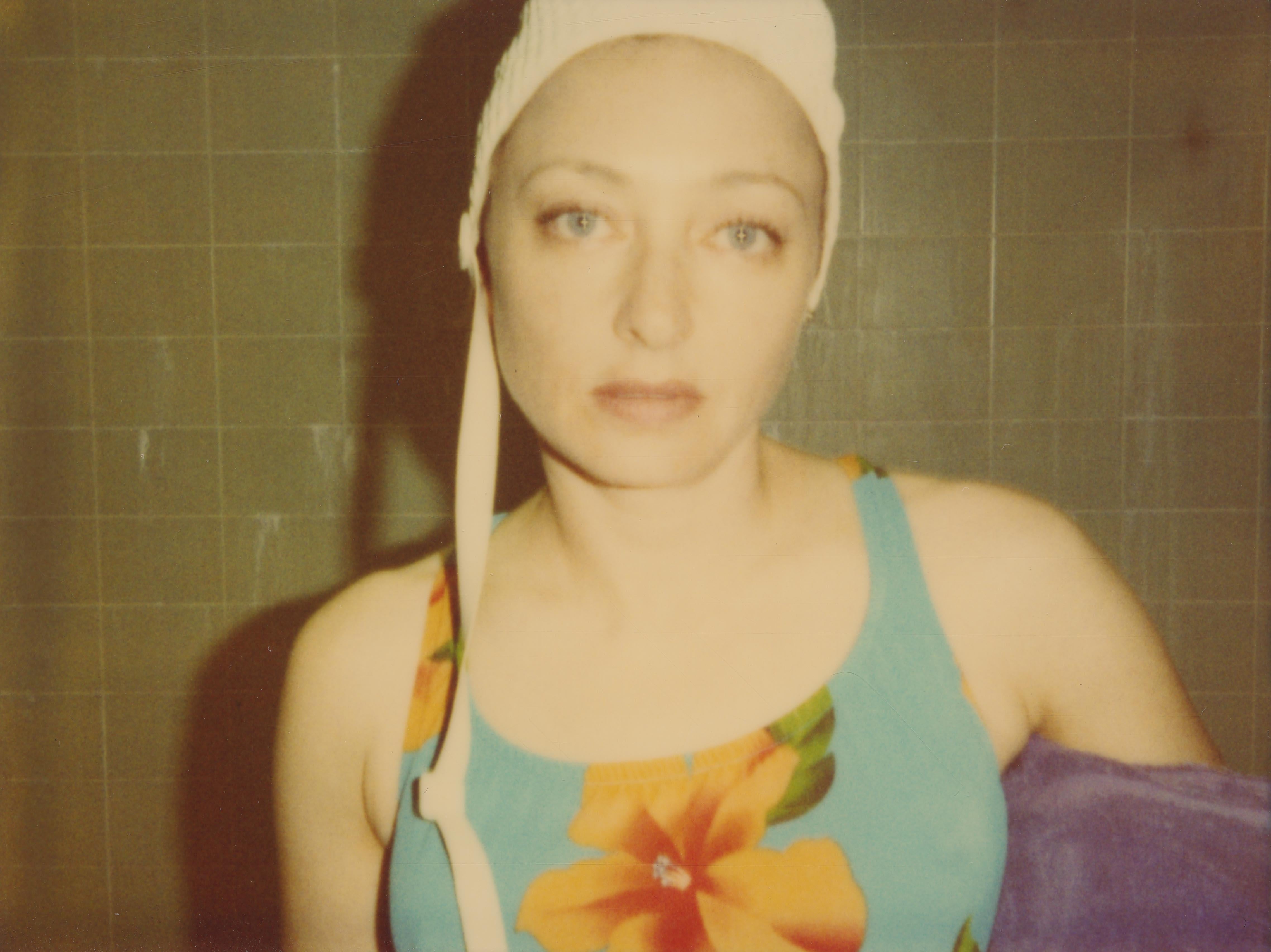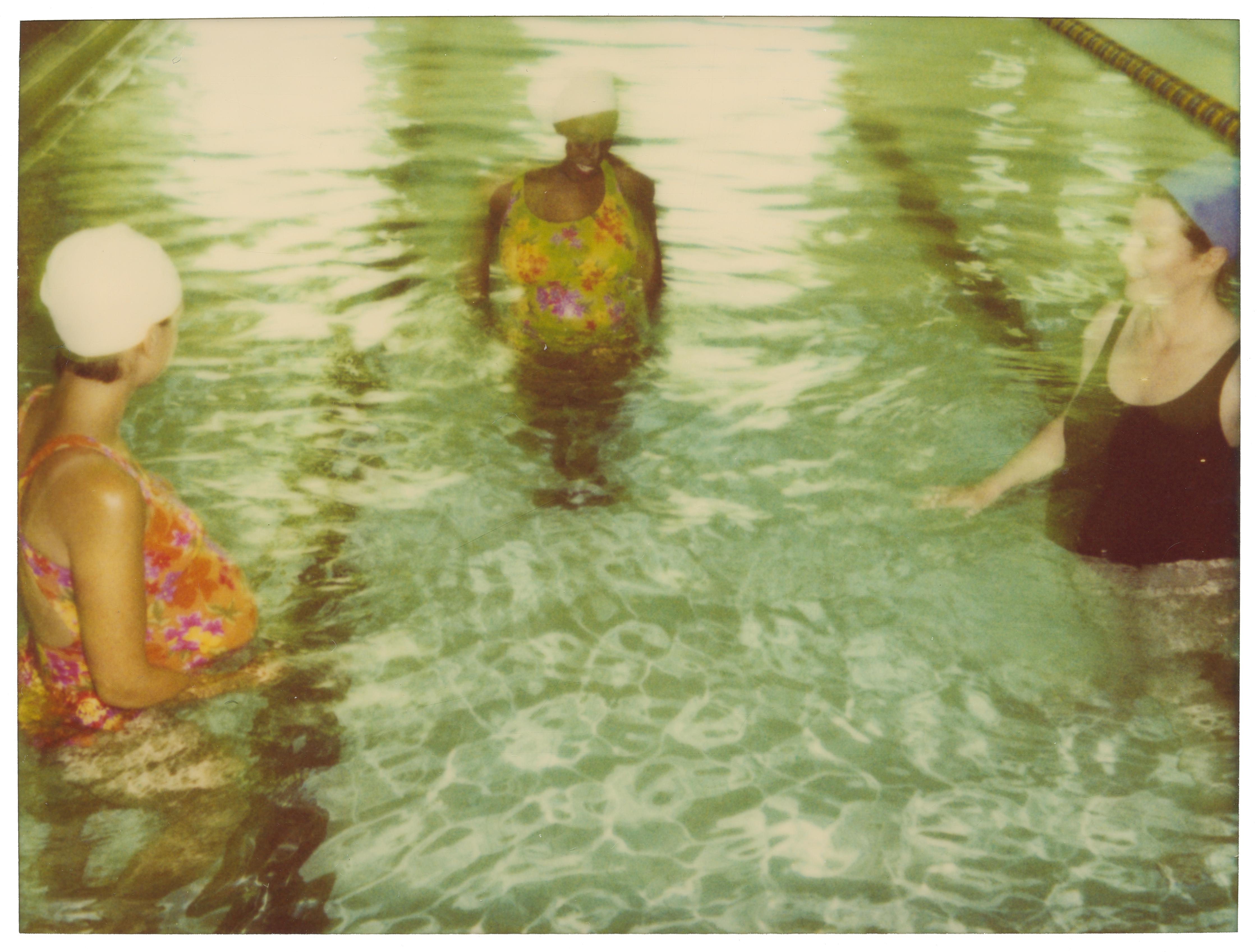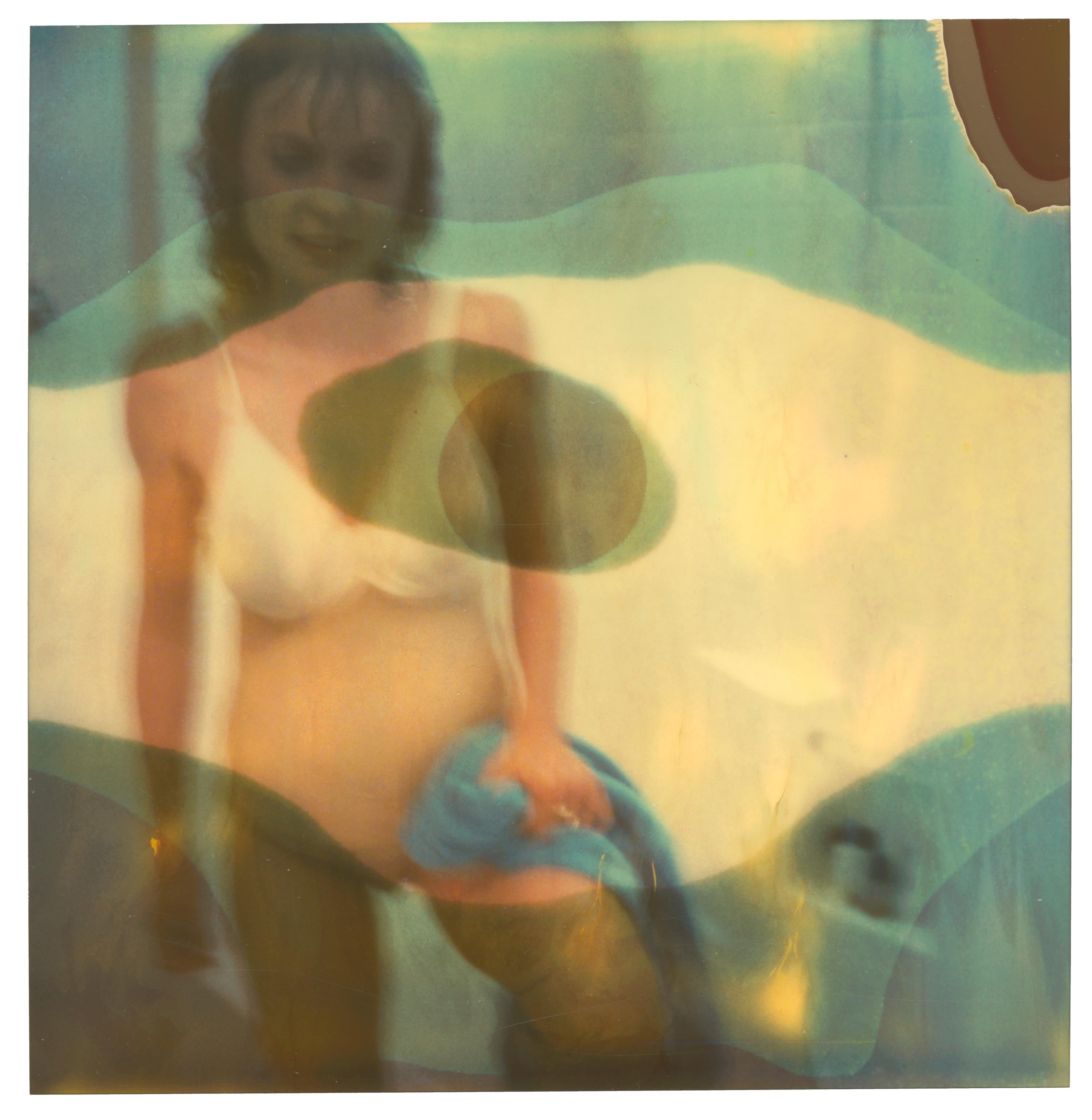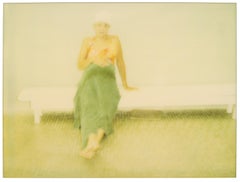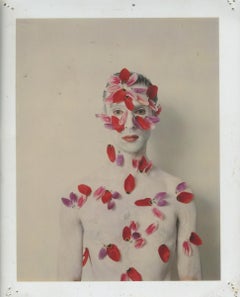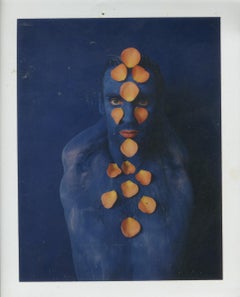Items Similar to Jean 3 (Suburbia) - Contemporary, Polaroid, Analog, Color, Photography, Portrait
Want more images or videos?
Request additional images or videos from the seller
1 of 2
Stefanie SchneiderJean 3 (Suburbia) - Contemporary, Polaroid, Analog, Color, Photography, Portrait2004
2004
$359.09
£266.42
€300
CA$500.63
A$542.78
CHF 286.04
MX$6,600.75
NOK 3,558.85
SEK 3,365.48
DKK 2,284.46
About the Item
Jean III (Suburbia) 2004,
20x24cm, Edition of 1/10,
digital C-Print based on a Polaroid,
Signature label with Certificate.
Artist Inventory No. 1688.01.
Not mounted.
This project "Suburbia" was shot on the set of Marc Forster's first feature film "Everything put Together' with Radha Mitchell, Michelle Hicks, Megan Mullally, and others.
Suburbs collectively, or the people who live in them
Suburb { a district, especially a residential one, on the edge of a city or large town }
synonyms [Outer edge , Fringes, Periphery, Limits, Outer reaches, Environs ]
Stefanie Schneider received her MFA in Communication Design at the Folkwang Schule Essen, Germany. Her work has been shown at the Museum for Photography, Braunschweig, Museum für Kommunikation, Berlin, the Institut für Neue Medien, Frankfurt, the Nassauischer Kunstverein, Wiesbaden, Kunstverein Bielefeld, Museum für Moderne Kunst Passau, Les Rencontres d'Arles, Foto -Triennale Esslingen, Bombay Beach Biennale 2018.
Stefanie Schneider - Artist Statement
Desolation and solitude are two words that come to mind when describing my Polaroid photographs. Another is the Japanese concept of Wabi-Sabi—the art of finding beauty in imperfection and transience. The simplicity of “flawed beauty” emerges from the expired film I use, reflecting themes of love and loneliness.
My work is a meditation on impermanence, an acceptance of a worldview that has no return. The shiny, idealized lens through which we once saw the world is crumbling—and has been for some time. What was once labeled blurry, broken, or botched now stands as a testament to the beauty of imperfection. For some, this is a seismic shift: acknowledging that reality is cracked, fragmented, and imperfect. Yet, even in this age when the cracks are impossible to ignore, acceptance remains elusive.
But isn’t that unsettling? To admit that the dream is decaying, transforming into something closer to a nightmare? Denial feels safer than facing the truth of ruin. It’s human nature to resist the notion of finitude, the idea that all things—ourselves, even God—have their time and fade away. Yet this acknowledgment of impermanence is at the core of my work.
I began my journey in photography before the digital revolution, before the era of Instagram, in a time when analog film demanded a different kind of mindfulness. With Polaroid, every shot is a commitment—a single, unrepeatable moment. There is no endless editing, no post-production safety net. This analog process became my way of celebrating imperfection and reconnecting with the raw, unpolished world, where flaws are not hidden but embraced.
Polaroid film, with its candy-like color palette and unpredictable blemishes, felt like an extension of my vision. The quirks and distortions of expired film brought me a sense of inner peace, mirroring the imperfections in life itself. It was liberating—a visual language that honored the “perfectly imperfect” and invited others to see their own scars as remarkable.
There are two ways to view the world: through a lens that embraces imperfection or one that denies it. But let me warn you—once you open your eyes to the beauty of imperfection, there’s no turning back. You step into a twilight zone of understanding, where the polished, artificial perfection of the past loses its appeal.
My creative process hinges on allowing space and time for magic to manifest—capturing moments of serendipity, often born from turbulence and imbalance. It’s the interplay of chaos and stillness that allows unknown forces to shape a moment. To me, this is the essence of art: a dialogue between the inner self and the external world, where rules dissolve, and emotions take precedence.
Dreams are the foundation of my work. They connect us to our subconscious, bridging the space between personal vision and shared experience. My photographs invite you to step into these dreamscapes, to become part of the story. Nostalgia, emotion, and instinct—spiced with a hint of desire—are the ingredients of my art.
Ultimately, my work is about liberation: freeing ourselves from the tyranny of perfection, honoring the beauty in the transient and the flawed, and finding a space where it’s not just permissible—but essential—to simply be.
- Creator:Stefanie Schneider (1968, German)
- Creation Year:2004
- Dimensions:Height: 7.88 in (20 cm)Width: 9.45 in (24 cm)Depth: 0.04 in (1 mm)
- Medium:
- Movement & Style:
- Period:
- Condition:
- Gallery Location:Morongo Valley, CA
- Reference Number:1stDibs: LU652315561492
Stefanie Schneider
Stefanie Schneider received her MFA in Communication Design at the Folkwang Schule Essen, Germany. Her work has been shown at the Museum for Photography, Braunschweig, Museum für Kommunikation, Berlin, the Institut für Neue Medien, Frankfurt, the Nassauischer Kunstverein, Wiesbaden, Kunstverein Bielefeld, Museum für Moderne Kunst Passau, Les Rencontres d'Arles, Foto -Triennale Esslingen., Bombay Beach Biennale 2018, 2019.
About the Seller
4.9
Platinum Seller
Premium sellers with a 4.7+ rating and 24-hour response times
Established in 1996
1stDibs seller since 2017
1,042 sales on 1stDibs
Typical response time: 2 hours
- ShippingRetrieving quote...Shipping from: Morongo Valley, CA
- Return Policy
Authenticity Guarantee
In the unlikely event there’s an issue with an item’s authenticity, contact us within 1 year for a full refund. DetailsMoney-Back Guarantee
If your item is not as described, is damaged in transit, or does not arrive, contact us within 7 days for a full refund. Details24-Hour Cancellation
You have a 24-hour grace period in which to reconsider your purchase, with no questions asked.Vetted Professional Sellers
Our world-class sellers must adhere to strict standards for service and quality, maintaining the integrity of our listings.Price-Match Guarantee
If you find that a seller listed the same item for a lower price elsewhere, we’ll match it.Trusted Global Delivery
Our best-in-class carrier network provides specialized shipping options worldwide, including custom delivery.More From This Seller
View AllJean 2 (Suburbia) - Contemporary, Polaroid, Analog, Color, Photography, Portrait
By Stefanie Schneider
Located in Morongo Valley, CA
Jean II (Suburbia) - 2004
20x25cm,
Edition of 10 plus 2 Artist Proofs.
Archival C-Print, based on the Polaroid.
Certificate and Signature label.
Artist Inventory No. 1687.
Not mounted.
The project "Suburbia" was shot on the set of Marc Forster's first feature film 'Everything put Together' with Radha Mitchell, Michelle Hicks, Megan Mullally, Catherine Lloyd Burns, Matt Malloy and others.
Suburbs collectively, or the people who live in them
Suburb { a district, especially a residential one, on the edge of a city or large town }
synonyms [Outer edge , Fringes, Periphery, Limits, Outer reaches, Environs ]
Sunday in suburbia, a summer's day heavy with heat, hardly a soul to be seen. As a result, the motifs of Stefanie Schneider's “Suburbia” cycle – put together in California, in the very west of the USA – are virtually inconspicuous.Schneider's camera encircles an idyllic American setting, capturing a garden practically empty of people. Surrounded by a white picket fence, flowers and trees bloom profusely in the blazing sunlight. The day is empty and quiet like only a Sunday can be. The grass is perfectly cut, the garden well tended, the inhabitants oblivious to everything and lethargic. An instant is seized, revealing the tragedy of an average, unsuccessful, middle class life.
The scene is familiar from countless movies and American literature; the perfect façade of an American ideal, which seems to conceal the horror of daily life. In David Lynch's „Blue Velvet“ the film begins with the camera rolling over a similar setting: the view over the fence, the painstakingly neatly cut lawn, ending with a close-up: a cut-off ear covered with feasting ants.
Stefanie Schneider overdoes it, she exaggerates: this is confirmed by the irritating colourfulness as well as the vehemence of the motifs. Emptiness stands in stark contrast to the beauty of the blooming roses or the lush growth of the trees. The fenced, idyllic summer scene appears vacant; unused chairs surround a table, the grill untouched and clean, no object out of place. It is only the inhabitants who appear curiously lost. Schneider shows them in the middle of their saturated lives, in well-tended averageness, which can only be endured with a Martini on ice, on hand before lunch. In her opinion the scenes are banal, yet one becomes witness to great intimacy.
Schneider's „Suburbia“ cycle lives from the interplay of the motifs, and tells a story with the same flavour as American author Raymond Carver...
Category
Early 2000s Contemporary Portrait Photography
Materials
Archival Paper, Photographic Paper, C Print, Color, Polaroid
Jean (Suburbia) - Contemporary, Polaroid, Analog, Color, Photography, Portrait
By Stefanie Schneider
Located in Morongo Valley, CA
Jean (Suburbia) 2004, 20x24cm, Edition of 1/10,
digital C-Print based on a Polaroid, not mounted, Signed on verso with Certificate, unmounted.
This project "Suburbia" was shot on th...
Category
Early 2000s Contemporary Portrait Photography
Materials
Archival Paper, Photographic Paper, C Print, Color, Polaroid
Transformation (Suburbia) - Contemporary, Polaroid, Photography, Portrait
By Stefanie Schneider
Located in Morongo Valley, CA
Transformation (Suburbia) - 2004
40x48cm,
Edition of 10 plus 2 Artist Proofs.
Archival C-Print based on the Polaroid.
Signature label and Certificate.
Artist Inventory No. 1675....
Category
Early 2000s Contemporary Portrait Photography
Materials
Archival Paper, Photographic Paper, C Print, Color, Polaroid
Judith (Suburbia) - Contemporary, Polaroid, Analog, Color, Photography, Portrait
By Stefanie Schneider
Located in Morongo Valley, CA
Judith (Suburbia) 2004
20x24cm,
Edition of 10,
Archival C-Print based on the Polaroid
not mounted,
Signed on verso with Certificate.
Artist Inventory No. 1673.01.
This project ...
Category
Early 2000s Contemporary Portrait Photography
Materials
Archival Paper, Photographic Paper, C Print, Color, Polaroid
Exercise II (Suburbia) - Contemporary, Polaroid, Photography, Portrait
By Stefanie Schneider
Located in Morongo Valley, CA
Exercise II (Suburbia) - 2004
20x24cm,
Edition of 10,
digital C-Print based on a Polaroid,
Signature label and Certificate. Artist Inventory No. 1714.
Not mounted,
This project "Suburbia" was shot on the set of Marc Forster's first feature film "Everything put Together' with Radha Mitchell, Michelle Hicks, Megan Mullally...
Category
Early 2000s Contemporary Portrait Photography
Materials
Archival Paper, Photographic Paper, C Print, Color, Polaroid
Everything put Together (Suburbia) - Contemporary, Polaroid, Analog, Portrait
By Stefanie Schneider
Located in Morongo Valley, CA
Everything put Together (Suburbia) - 2004
50x50cm,
Edition of 10,
Archival C-Print based on the Polaroid.
Signature label with Certificate.
Artist inventory #19313.
Not mounte...
Category
Early 2000s Contemporary Figurative Photography
Materials
Archival Paper, Photographic Paper, C Print, Color, Polaroid
You May Also Like
Untitled Polaroid 23, Unique Self Portrait Photograph by Dietmar Busse
By Dietmar Busse
Located in New York, NY
Untitled Polaroid 23, Unique Self Portrait Photograph by Dietmar Busse.
2001
Signed and dated in black ink, verso
Polaroid (Unique)
5 x 4 inches, image
Contact gallery for price.
Category
Early 2000s Contemporary Photography
Materials
Polaroid
Self-Portrait
Located in Toronto, Ontario
Barbara Astman (b. 1950) is a celebrated contemporary Canadian artist, best known for her innovative work using photography and its many utilitarian offshoots such as scanners and ph...
Category
1970s Contemporary Portrait Photography
Materials
Polaroid
Jasmine - 21st Century Contemporary Photographic Print Color Polaroid
By Pia Clodi
Located in Zürich, CH
Part of the BLOOMY VIEW series taken in Bern 2020 in collaboration with Heym Collections, the images gained new life in their ambiguity, which often stimulates the viewer to project ...
Category
2010s Contemporary Abstract Prints
Materials
Carbon Pigment, Polaroid
$1,819 Sale Price
20% Off
Untitled Polaroid 21, Unique Polaroid Self Portrait by Dietmar Busse
By Dietmar Busse
Located in New York, NY
This is a unique polaroid photograph by Dietmar Busse.
Untitled Polaroid 21
2001
Signed and numbered in black ink, verso
Polaroid (Unique)
5 x 4 inches, image
Contact gallery fo...
Category
Early 2000s Contemporary Photography
Materials
Polaroid
Untitled (Aiden 12), Polaroid Transfer by Mark Beard
By Mark Beard
Located in New York, NY
This polaroid transfer by Mark Beard is offered by CLAMP in New York City.
Category
1990s Contemporary Photography
Materials
Archival Paper, Polaroid
Jane Calvin Composite Photograph, 1990
By Jane Calvin
Located in New York, NY
Jane Calvin (American, b. 1938)
Untitled, 1990
Photograph
Sight: 19 1/2 x 15 1/2 in.
Framed: 26 7/8 x 22 1/2 x 1 1/4 in.
Edition 2/10
Provenance: Collection of Robert Burge, New Y...
Category
1990s Contemporary Color Photography
Materials
Color
More Ways To Browse
Lou Michaels
Marilyn Monroe Pearls
Mick Rock Signed
One Million Years Bc Poster
Osvaldo Salas
Photography Fred Astaire
Photography Robert Redford
Slim Aarons Tiger
Sonny And Cher
Arnold Palmer
August Becker
Bert Stern Crucifix
Brad Pitt Photography
Cate Blanchett Art
Christopher Reeve
Clint Eastwood Portrait
Contact Telephone Number
Edward Curtis Plates
